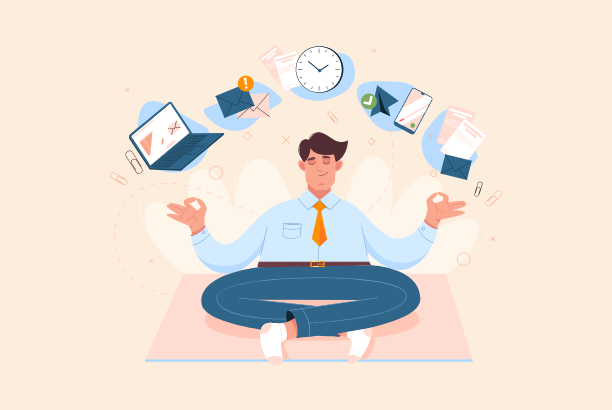The life of a graphic designer: a world of creative freedom, endless possibilities, and…deadlines that loom like hungry monsters. The pressure to constantly churn out exceptional work can easily spill over into personal time, leaving you feeling burnt out and yearning for a life beyond the glow of your monitor. But fear not, fellow pixel pushers! Achieving work-life balance as a graphic designer is possible, and it’s the key to a fulfilling and sustainable career.

Know Your Limits (and Don’t Be Afraid to Set Them):
We all have a finite amount of creative energy. Pushing yourself nonstop might seem productive in the short term, but it leads to exhaustion and resentment. Identify your most productive hours and schedule demanding tasks for those times. Don’t be afraid to say no to extra work, especially if it jeopardizes your well-being.
Master the Art of Time Management:
Become a scheduling ninja! Utilize project management tools, to-do lists, and timeboxing techniques to maximize your work hours. Batch similar tasks together to minimize context switching, a productivity killer. Remember, taking short breaks throughout the day to refresh your mind is essential for maintaining focus and avoiding burnout.
Design a Workspace (and Life) You Love:
Your workspace has a massive impact on your well-being. Create a dedicated design zone that’s organized, comfortable, and inspires creativity. But don’t let work bleed into your personal space. Shut down your computer, put away your sketchbook, and establish clear boundaries between work and life.

Embrace the Power of “Off”:
Disconnecting from work is crucial. When you’re off the clock, resist the urge to check emails or social media notifications. Pursue hobbies that have nothing to do with design – read a book, go for a hike, learn to play the ukulele (yes, really!). Engaging in activities that spark joy will help you recharge and return to work feeling refreshed and inspired.
The Importance of Physical Activity:
Sitting all day can wreak havoc on your body and mind. Schedule regular breaks to stretch, walk, or do some light exercise. Consider a standing desk or a yoga ball chair to promote better posture and circulation. Taking care of your physical health goes hand-in-hand with maintaining mental well-being.
Connect and Collaborate (But Not Always About Work):
Humans are social creatures! Connect with fellow designers online or in person. Share ideas, offer support, and learn from each other’s experiences. Just remember, these connections don’t always have to be work-related. Build friendships outside of design and have conversations that don’t involve Pantone colors or the latest design trends.
Don’t Be Afraid to Ask for Help:
Feeling overwhelmed? Delegate tasks, outsource if needed, or simply ask your supervisor for a lighter workload. Remember, a healthy work environment recognizes the importance of employee well-being. A supportive boss will understand your need for balance and work with you to find sustainable solutions.
Remember, You Are More Than Your Work:
Design is a passion, but it’s not your entire identity. Nurture other aspects of your life. Spend time with loved ones, explore new interests, and don’t be afraid to step away from the computer and simply be present in the world. A well-rounded life fuels creativity and prevents burnout.
Work-life balance is a journey, not a destination. There will be days when work demands more attention, but by implementing these tips and prioritizing your well-being, you can create a sustainable and fulfilling design career. So, take a deep breath, step away from the screen, and remember, a happy designer is a productive designer!

